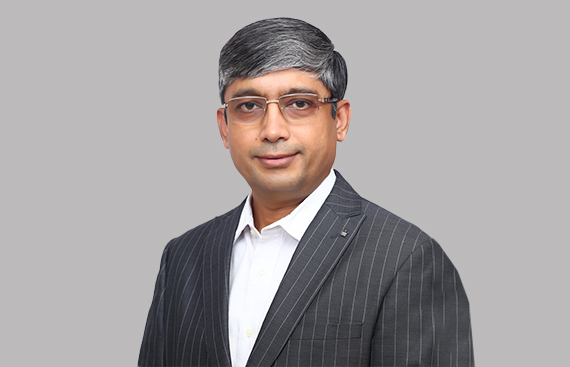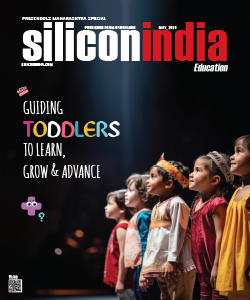Global Shift Towards a Digital-First Future to Further Intensify in 2024

An IIM Ahmedabad alumnus, Manoj possesses over 25 years of experience in the IT and telecom infrastructure services industry. Before joining Equinix in 2021, he successfully handled key positions across various companies such as GPX Global Systems, Bharti Airtel, Lucent Technologies, HCL Comnet and Avaya. In a recent conversation with Siliconindia, Manoj Paul, Managing Director, Equinix India gave us a brief, yet insightful overview of the overall technology landscape so far this year, and even shared his expectations in terms of tech advancements in the upcoming year. Below are the excerpts from the exclusive interview
Share your thoughts on the Indian technology landscape so far in 2023.
As of 2023, digital technology stands as a driving force propelling India’s economic and social advancement, creating significant business opportunities and elevating the global standard of living. In the aftermath of the pandemic, the adoption of hybrid working models has accelerated the pace of digital transformation (DX). Notably, in India, the foundational deployment of 5G coverage has become instrumental in facilitating the growth of emerging technologies such as AI, IoT, digital twins, and more. This strategic integration of advanced connectivity is poised to shape a new era, where technology not only responds to but actively drives societal progress.
In terms of cybersecurity, prioritizing risk assessment is paramount, necessitating a focus on transformative technologies such as 5G, AI, and IoT. Notably, the adoption of AI, particularly generative AI, is experiencing remarkable growth in India. The strides made by AI are significant, and its integration holds the potential to catalyse the development of intelligent applications, providing organizations with the tools to flourish in an ever-evolving digital landscape. The embrace of AI emerges as a strategic imperative, unlocking resilience, competitive advantages, and sustainable growth for forward-looking entities.
What were some of the major concerns for tech organizations while entering 2023? How is the scenario now?
Firstly, integrating data centers and digital services is met with exciting advancements and challenges, particularly in the era of widespread AI adoption by businesses. The surge in cloud computing, edge computing, and AI applications highlights the necessity for adaptable approaches in the evolving digital landscape. Enterprises are currently facing the complex task of optimizing the value of AI models while safeguarding sensitive data. This challenge has led to exploring private AI environments—tailored exclusively for organizational use. Private AI offers a crucial equilibrium, allowing enterprises to implement AI strategies effectively while maintaining control over their invaluable data. In AI-driven applications, the significance of low-latency data exchange cannot be overstated. This underscores the need for flexible and hybrid digital infrastructure to accommodate custom algorithms shaped by diverse audience signals and historical media performance.
Secondly, India is witnessing a growing demand for AI/ML expertise, underscoring the necessity for a proficient workforce to drive digitalization initiatives. The persistent need for more skilled professionals poses a notable challenge for organizations aiming to maintain a competitive edge in the digital landscape. Despite this hurdle, numerous IT leaders are proactively expanding their teams and recruiting dedicated IT personnel to address the talent gap. Although governing bodies in the Asia-Pacific region advocate for the integration of AI, enterprises encounter obstacles associated with infrastructure and implementation capabilities during the execution of these initiatives.
According to you, what were the two most significant advancements for the tech industry in 2023?
Firstly, there is a substantial surge in customer interest regarding the deployment and expansion of AI platforms, marking a noteworthy shift in the landscape. What sets this trend apart is that the power requirements for AI have evolved significantly, aligning less with conventional norms. Notably, public AI platforms like ChatGPT are gaining traction among companies, and enterprises are increasingly developing their own AI tools. Managing the powerful and space-intensive nature of AI poses both a challenge and an opportunity.
Secondly, the surge in 5G adoption in India is accompanied by a notable emphasis on delivering high-quality 5G experiences, positioning it as a top priority for IT decision-makers. Recognized as a crucial component of strategic plans, 5G is viewed as instrumental in harnessing the potential of emerging technologies such as AI and IoT. The advent of 5G has ushered in advancements in machine-type communications, ultra-low latency, and mobile edge computing, not only enhancing customer experiences but also creating avenues for new revenue streams. This transformative shift, driven by 5G adoption, is expanding the edge footprint and fuelling the demand for data and digital services as traditional enterprises pivot towards a digital-first approach.
How do you expect the overall technology landscape to evolve in 2024?
As we approach 2024, the global shift toward a digital-first future intensifies, with digital infrastructure emerging as a cornerstone for businesses to gain a competitive edge in the ever-expanding digital economy. This evolution brings-forth several innovations and digital trends that promise to reshape the landscape of data centers and digital services, fostering a sustainable and interconnected environment. The delicate balance between maximizing AI value and safeguarding sensitive data prompts the exploration of private AI, which enables enterprises to harmonize AI strategy execution while retaining control over valuable data. The growing enterprise adoption of cloud computing and the focus on edge computing & AI to process and analyze data closer to the source will also require increasingly flexible and hybrid approaches to digital infrastructure.
Another trend revolutionizing data centers is liquid cooling, a response to the escalating adoption of AI and high-performance computing (HPC) applications. Liquid cooling surpasses air efficiency, enabling higher rack density and improved cooling performance. Cloud-Adjacent Storage emerges as a solution to evolving data storage challenges. The expansion of public cloud, accelerated adoption of AI, and the need to derive meaningful insights from data put pressure on organizations to optimize the placement, control and security of their most valuable asset -data.
Read More News :
Choosing the Right AI Model is Key to Unlock the Technology's Fullest Potential
Future Prospects for the Indian Pharma Sector - An Expert Overview



.jpg)

.jpg)